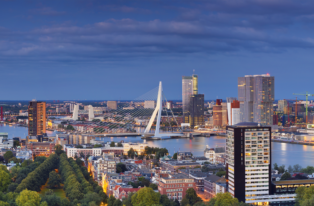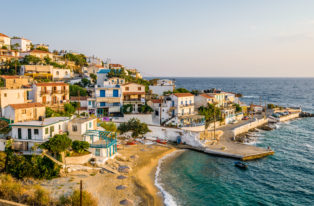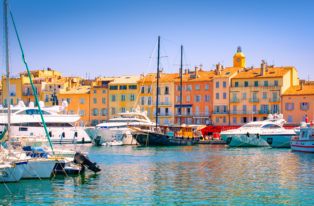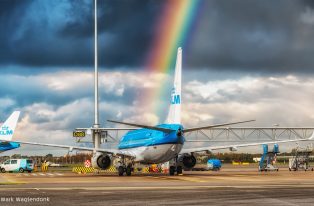E, F, G – Let’s Play Toponymy
Sadly, it has taken me five blogs to discover that there’s actually a name for the study of place names, their origin and meaning. The word “toponymy” derives from the Greek words for “place” (tópos) and “name” (ónoma), which is so obvious I can hardly believe the Great Oracle Ogle hasn’t pointed it out before. (Side-note to Scrabble lovers: notice how easily the words “top”, “pony” and “my” can be transformed into the game-winning “toponymy”!)
Let me stop there and move swiftly on to cities beginning with the letters E, F and G. What are the origins of their names, and why am I suddenly dealing with three letters at once? In answer to the latter question, I was surprised to discover that KLM serves only two destinations starting with E (Edinburgh and Entebbe) and only one (!) starting with F (Frankfurt). They formed a nice batch together with the five destinations starting with G (Geneva, Glasgow, Gothenburg, Guangzhou and Guayaquil), but I do hope KLM will add some new E and F destinations soon. What’s wrong with Edmonton, Eagle River, Eau Claire, Easter Island, Ebolowa, Ekibastuz, El Dorado and Eureka? And let’s give that lonely F some company by adding Fairbanks, Farafangana, Farewell, Filadelfia, Florence Flamingo and Flin Flon.
Here’s a lovely picture of Edinburgh Castle to wash away the silliness before we move on to the toponymy of KLM destinations starting with E, F and G.
Edinburgh: The Scottish capital owes its name to the castle Din Eidyn around which the city is built. “Din” or “dun” is a hill fort, as is “burgh” or “burh”. Eidyn is the name of area, which sounds a lot like “Eden”, but I may be barking up the wrong tree.
Entebbe: This Ugandan city on the banks of Lake Victoria takes its name from the Luganda word for “seat”, a reference to the fact that this was the seat of justice of the local Baganda chief.
Frankfurt: Also known as Frankfurt am Main, this German city owes its name to an ancient crossing (“furt” = ford) on the River Main. The Franks were in charge of the area, so this was the “ford of the Franks on the River Main”.
Before we get going with the G’s, let’s take a breather on the banks of Lake Geneva and wonder why, with so many mountains around, they chose to build Chillon Castle in the water.

Geneva: This famous Swiss city, home to the United Nations and the Red Cross, takes its name from the Celtic word “genu”/”genawa” meaning “estuary”, a reference to the Rivers Rhone and Arve that flow through the city out of Lake Geneva.
Glasgow: The name of Scotland’s biggest city originate from the Gaelic “glas cau” meaning “green hollow”, which it probably once was.
Gothenburg: Sweden’s second-largest city is actually called Göteborg, which originates from the words “Götar” (inhabitants of Gothia) and “borg” (castle).
Guangzhou: China’s third-largest city has had many different names in a history spanning many centuries. It’s earliest recorded name was Panyu, which was a reference to two nearby mountains Pan and Yu.
Guayaquil: Officially known as Santiago de Guayaquil, Ecuador’s largest city is located on the banks of the Guayas River, from which it takes its name.
According to local legend, Guayas was a great Puna chief who fought bravely against the Spanish conquistadors. Guayas is said to have killed his wife Quill before drowning himself to avoid capture.
This romantic tragedy brings our toponymy lesson to an end. If you have any information to add or if you’d like to tell us about the origins of your home town’s name, please feel free to do so below. All that remains is for me to say: “Farewell, Florence Flamingo, let’s Flin Flon on the Fairbanks of Farafangana.”











